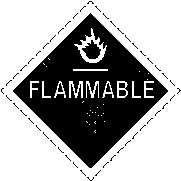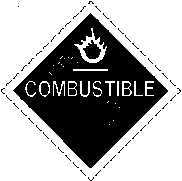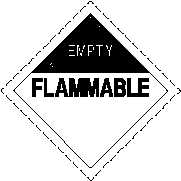DOE-HDBK-1015/2-93
FLAMMABLE AND COMBUSTIBLE LIQUIDS
Hazards of Chemicals and Gases
CH-05
Rev. 0
Page 32
Figure 4 DOT Flammable Liquid Labels
Volatility -
The tendency or ability of a liquid to vaporize.
Oxygen Limits -
The concentration of oxygen below which a normally flammable vapor mixture will
not ignite (normally 12 to 14 percent oxygen). An increase of pressure or
temperature will reduce the required lower oxygen limit, however.
Rate of Diffusion -
The tendency of one gas or vapor to disperse into or mix with another gas or
vapor. Dependent upon the density of the vapor or gas as compared to air.
Vapor Pressure -
The pressure exerted by a volatile liquid under any of the conditions of equilibrium
that may exist between the vapors and the liquid.
Oxygen Deficiency -
The designation given to an atmosphere containing less than the percentage of
oxygen normally found in air (<21%).
The volatility of liquids will increase as heat is applied to them. Accordingly, combustible
liquids should be treated as flammable when they are heated even though the liquid, when not
heated, is outside the flammable range.
The Department of Transportation (DOT) has modified the definition of flammable liquids in
its Hazardous Materials Regulation, 49 CFR parts 170 to 179. They are defined as any liquid
that gives off flammable vapors at or below a temperature of 80 F. This definition is important
because the DOT Flammable Liquid Label, illustrated in Figure 4, is one means by which
containers of flammable liquids can be identified for shipping, receiving, and transportation.






